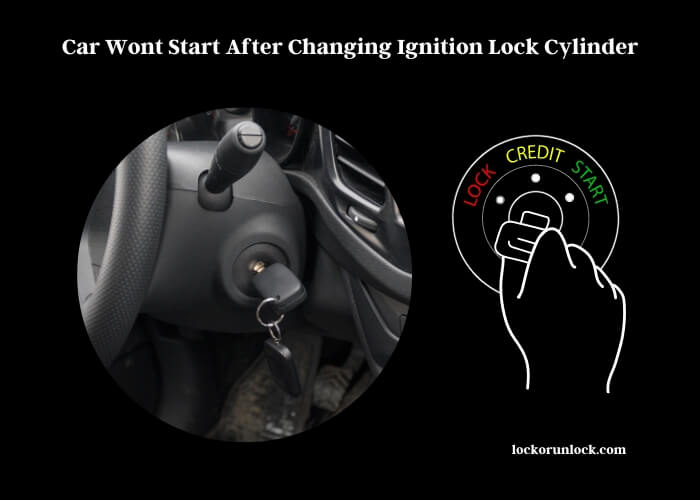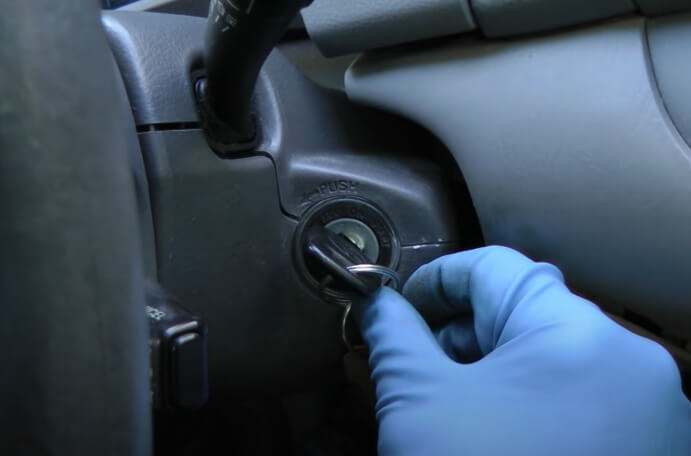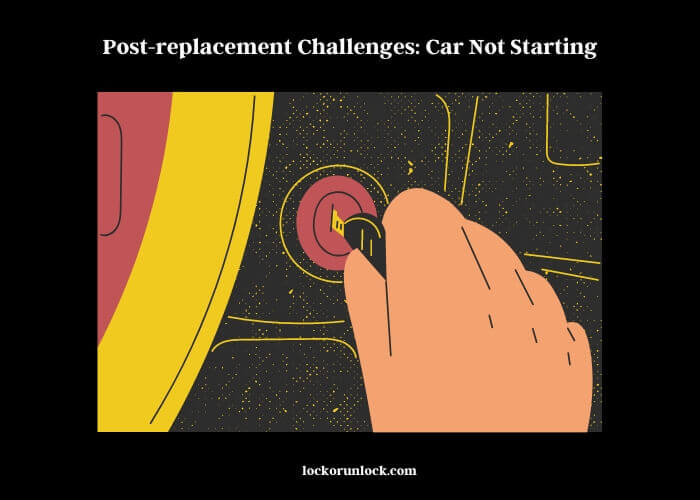Your car might refuse to start after changing the ignition lock cylinder. This issue can stem from several possible factors.
The ignition system is integral for the start-up process of your car. A misalignment or improper connection within this system after a cylinder replacement can interfere with the engine start. If the new cylinder is not correctly integrated, it may disrupt the entire system.

Key recognition is another critical factor that might prevent the car from starting. If the car’s system fails to identify the key, it won’t allow the engine to ignite. This is often associated with the anti-theft system of the car which is designed to deter unauthorized use.
The wiring of the ignition system also plays a crucial role in starting the car. Any faults in wiring, such as frayed wires or incorrect connections, could lead to electrical issues. These problems can prevent the car from starting, even if the lock cylinder has been replaced accurately.
A drained or faulty car battery could be another reason why the car is not starting. The battery powers the starter motor, which is necessary to crank the engine. Without a functioning starter motor, the car will not start.
Errors during the installation process of the new lock cylinder may also lead to this issue. Even a minor mistake can disrupt the entire ignition system. Therefore, professional installation is always recommended.
Troubleshooting the problem will require a step by step approach to identify the underlying issue. It may involve checking the installation of the cylinder, examining the electrical wiring, testing the car battery, and ensuring the anti-theft system is functioning correctly. With careful inspection and rectification of the problem, the car should be able to start smoothly.
The Ignition Lock Cylinder: The Basics
The ignition lock cylinder is an essential component of your car. This small mechanical part holds the key to starting your vehicle, both literally and metaphorically.

Purpose and Functionality of the Ignition Lock Cylinder
The ignition lock cylinder is where you insert the key to start your car. It serves as an interface between the ignition system and the key, translating the mechanical action of turning the key into an electrical signal that starts the vehicle.
Key Components of the Ignition Lock Cylinder
| Component | Function |
| Key Slot | The part where the key is inserted. |
| Tumblers | Small pieces inside the cylinder that match the key’s cut. |
| Electrical Switch | Sends the signal to start the vehicle when the key is turned. |
Changing the Ignition Lock Cylinder: Motivating Factors
There are several reasons why you might need to change the ignition lock cylinder. Here are some of the most common ones.
Ignition Cylinder Wear and Tear
Like any other mechanical part, the ignition lock cylinder is subject to wear and tear over time. The tumblers inside the cylinder can wear out, making it difficult to turn the key.
Damaged or Broken Cylinder
The ignition lock cylinder can become damaged or broken due to an accident, attempted theft, or other mishaps. In such cases, it would need to be replaced.
Misplaced or Lost Keys
If you’ve lost your car keys and don’t have a spare, changing the ignition lock cylinder may be necessary.
Replacing the Ignition Lock Cylinder: Step-by-step Guide
Changing the ignition lock cylinder can either be done professionally or as a DIY project. Let’s look at both scenarios.
Professional Ignition Lock Cylinder Replacement
Having a professional mechanic replace your ignition lock cylinder is the safest option, especially if you’re not familiar with car repairs. A professional will ensure the job is done correctly and safely, without causing any further damage to your vehicle.
DIY Replacement Overview
If you’re confident in your abilities, you can replace the ignition lock cylinder yourself. Be aware, though, that this process requires some technical knowledge and specific tools.
Tools and Equipment Checklist for DIY Ignition Lock Cylinder Replacement
| Tools Needed | Purpose |
| Screwdriver | To remove screws and panels. |
| Ignition Lock Cylinder Kit | Replacement parts for the cylinder. |
| Key | To test the new ignition lock cylinder. |
Post-Replacement Challenges: Car Not Starting
Sometimes, even after the ignition lock cylinder has been replaced, the car won’t start. Here are some possible reasons why.
Possible Ignition Switch Complications
An improperly installed ignition lock cylinder could lead to ignition switch complications. The ignition switch could also be faulty or worn out.

Misalignment of the New Ignition Lock Cylinder
Misalignment of the new ignition lock cylinder can also prevent the car from starting. It’s crucial to ensure the cylinder is aligned properly during installation.
Issues with Electrical Connections
Electrical connection problems could also prevent your car from starting after changing the ignition lock cylinder. Ensure all connections are intact and secure.
Troubleshooting Post-Replacement Issues
If your car won’t start after changing the ignition lock cylinder, don’t panic. Here are some solutions.
Rectifying Ignition Switch Complications
If the problem lies with the ignition switch, you might need to replace it. If you’re unsure, consider consulting a professional mechanic.
Properly Aligning the Ignition Lock Cylinder
If the new ignition lock cylinder is misaligned, it may need to be adjusted or reinstalled. This can be done with careful attention and the right tools.
Fixing Electrical Connection Issues
If there are problems with the electrical connections, check for loose wires or broken connections. You may need to consult a professional if the problem persists.
Preventive Measures: Minimizing Post-Replacement Complications
Taking the right steps during installation can minimize the risk of problems after replacing the ignition lock cylinder.
Ensuring Proper Installation
To ensure the ignition lock cylinder is installed correctly, follow all steps of the installation guide thoroughly. If you’re unsure, it’s always safer to get help from a professional.
Opting for High-Quality Replacement Parts
Investing in high-quality replacement parts can prevent future problems. Although these parts might cost more upfront, they can save you from headaches and extra expenses down the line.
Checklist for Seeking Professional Help
| Signs You Need Professional Help | Explanation |
| The car won’t start after several attempts | This could mean that there’s a more serious issue at hand. |
| You’re not confident in your DIY skills | Ignition systems are complex, and a mistake can lead to costly repairs. |
| The ignition lock cylinder doesn’t seem to fit | It could be the wrong part, or there could be another issue preventing proper installation. |
The Importance of a Professional Mechanic in Troubleshooting Complex Issues
While DIY repairs can be rewarding and cost-effective, certain issues might require the expertise of a professional mechanic.
Recurring Start-up Problems
If your car has recurring issues starting up, even after you’ve replaced the ignition lock cylinder and attempted to fix other potential problems, it’s time to consult a professional.
Intricate Electrical Complications
Electrical problems can be complex and hard to diagnose without the right expertise and tools. If you suspect your car’s starting issues might be electrical, it’s best to get a professional mechanic to take a look.
References
So, if your car won't start after changing the ignition lock cylinder, it's crucial not to panic. Understanding potential issues and their solutions can help you troubleshoot and, if necessary, explain the problem to a professional. Remember, proper installation and using high-quality parts can prevent many post-replacement issues.
Read more:
